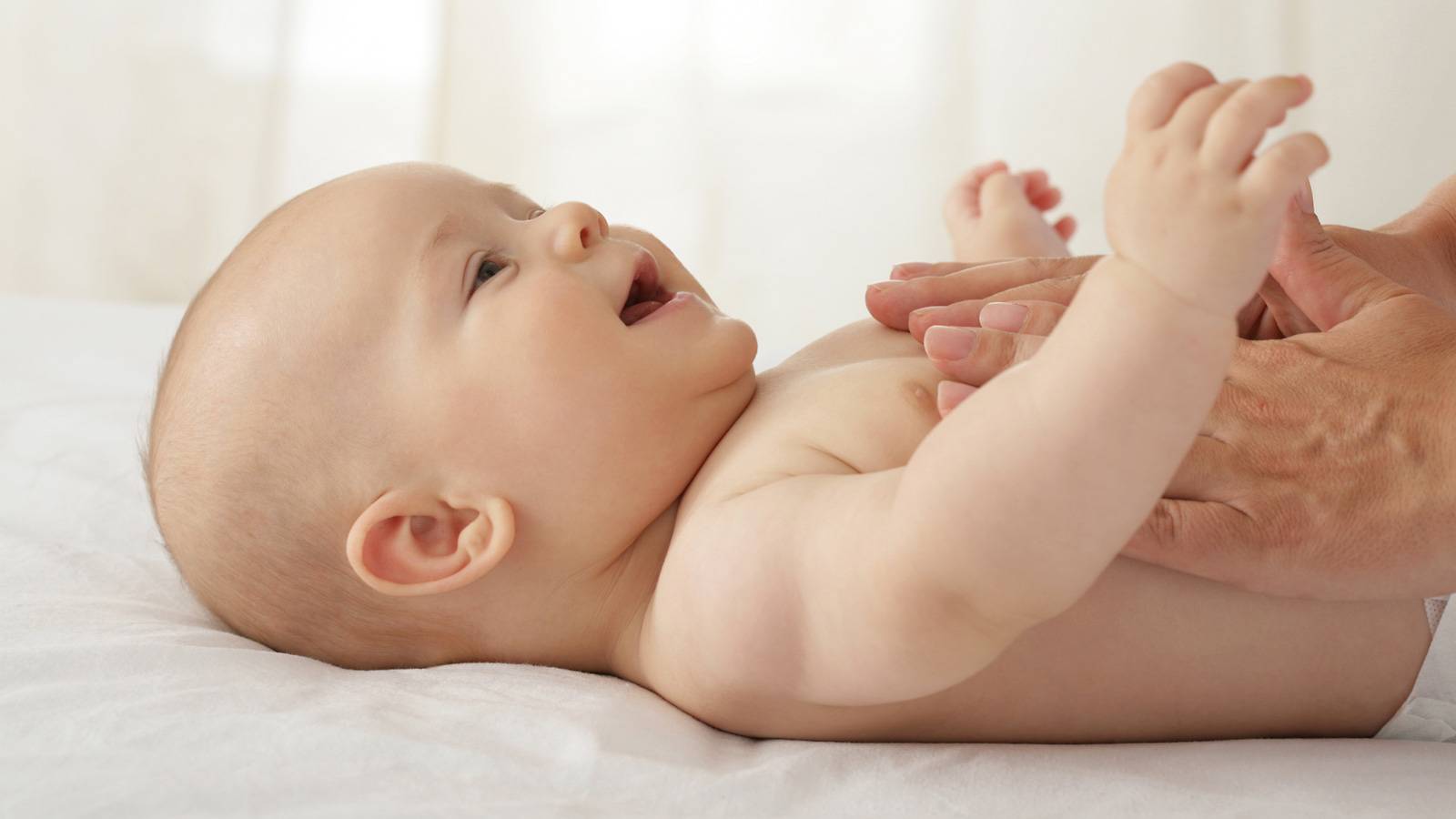Applying long, loving stokes on your munchkin’s skin are a quick way to soothe, as well as boost her well-being.
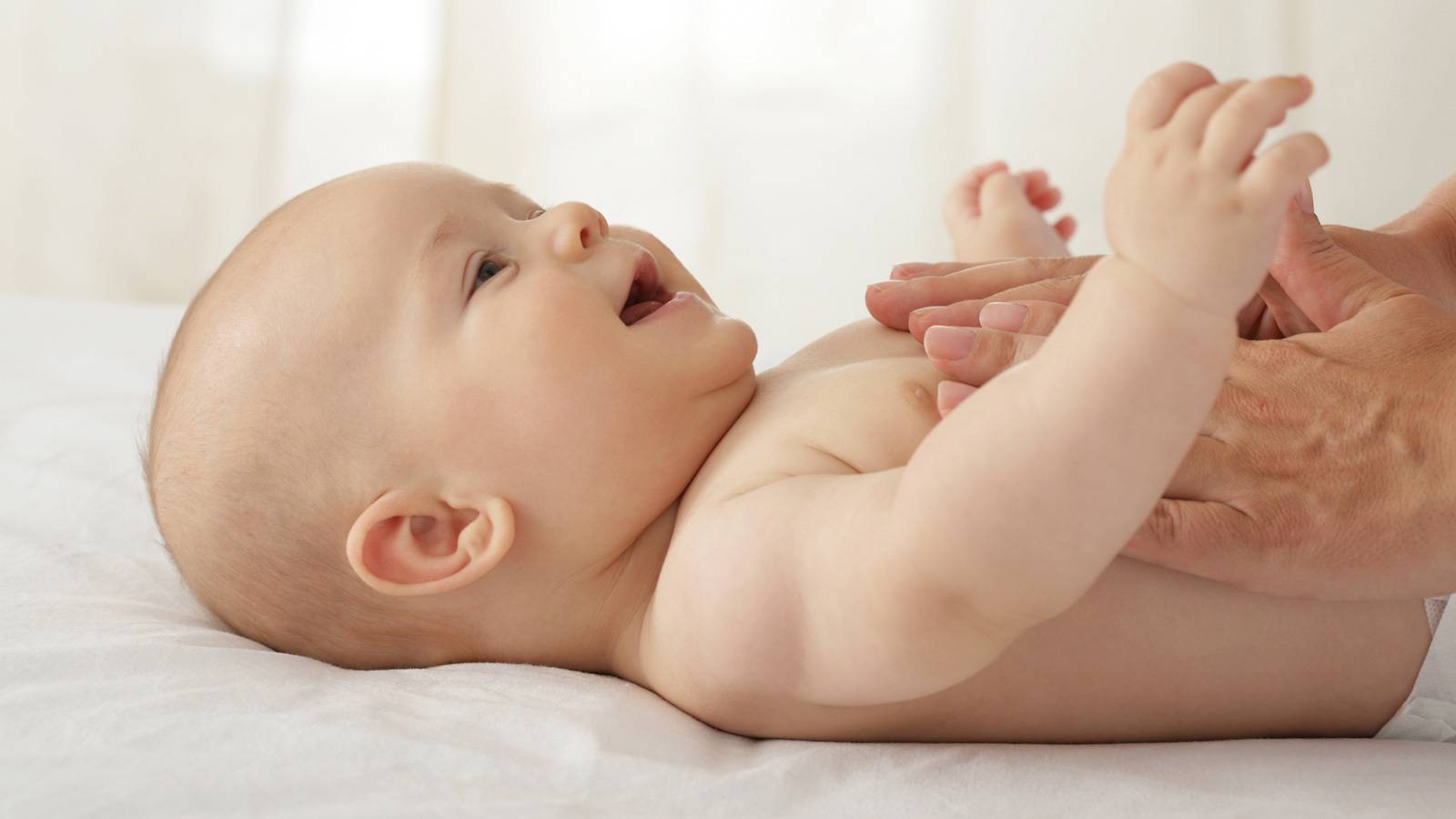
If a massage is all it takes to put you in a calmer state of mind ― the same could apply to your little one, too! A good rub triggers your nervous system to produce more serotonin — also known as the “feel-good hormone” — so you’ll feel calmer and happier.
In fact, routinely giving your sweetie a good rubdown can offer countless health benefits, including:
* Alleviating common problems like constipation or colic.
* Raising levels of oxytocin — a hormone responsible for our warm and loving feelings ― in you and your baby from the affectionate touches and increased contact.
* Enhancing emotional development.
* Ensuring a good night’s sleep.
* Building stronger parent-child bonds, since you’ll enjoy special one-on-one time shared with bubba during this activity. As you massage her, chat to your kewpie and gaze lovingly into her eyes.
* Helping preemies and low birthweight babies put on weight.
What will I need?
Before you begin, make sure that the room is quiet, maybe even play some soft calming music in the background. Just as in a spa, a soothing setting will keep your mini-me calm throughout the massage. Strip your munchkin down to her diaper and lay her down on a towel or blanket and tuck a pillow under her head for support.
Remove all your jewellery before you begin as you don’t want to scratch your little one’s delicate skin. You may also wish to use a baby-safe oil to ease the way. Just make sure you avoid:
* Essential oils These may include chemical compounds that are harmful to your baby.
* Mustard oil It can potentially cause skin irritation and damage.
* Aqueous cream This contains sodium lauryl sulfate, a harsh chemical that can damage skin.
Most over-the-counter baby oils ― especially when you stick to well-established brands ― should be safe on baby’s skin.
Otherwise check with baby’s paediatrician or dermatologist to be sure about the suitability, especially if bubba suffers from chronic skin conditions like eczema. In cases where your child has been prescribed with emollients or medical moisturisers, you should use those for massage instead.
A good rub triggers your nervous system to produce more serotonin — also known as the “feel-good hormone” — so you’ll feel calmer and happier.
When can I massage her?
A good time to try will be when she’s fed and well-rested, though not right after a meal or a nap — try to do it two hours after. The best time to do this is when baby is awake, alert and interacting with her environment and with you. Remember: Routine is important for your little one, so include massage in your little one’s daily schedule!
How do I begin?
While giving your baby a rub, remember:
- Don’t tug at her limbs to hold them down if she’s squirming and trying to get away from you. Doing so will only make her avoid being touched in the future. Try to keep your touch as gentle as possible at all times.
- That whenever your baby starts to cry during a massage, she’s indicating that she’s had enough or that she does not enjoy being touched that way. You can try another technique or attempt it another day.
- Always be gentle and firm when massaging the surface of baby’s skin — too light a touch may feel like a tickle. If you spot bright red marks on her skin as you move along, you’re using too much force.
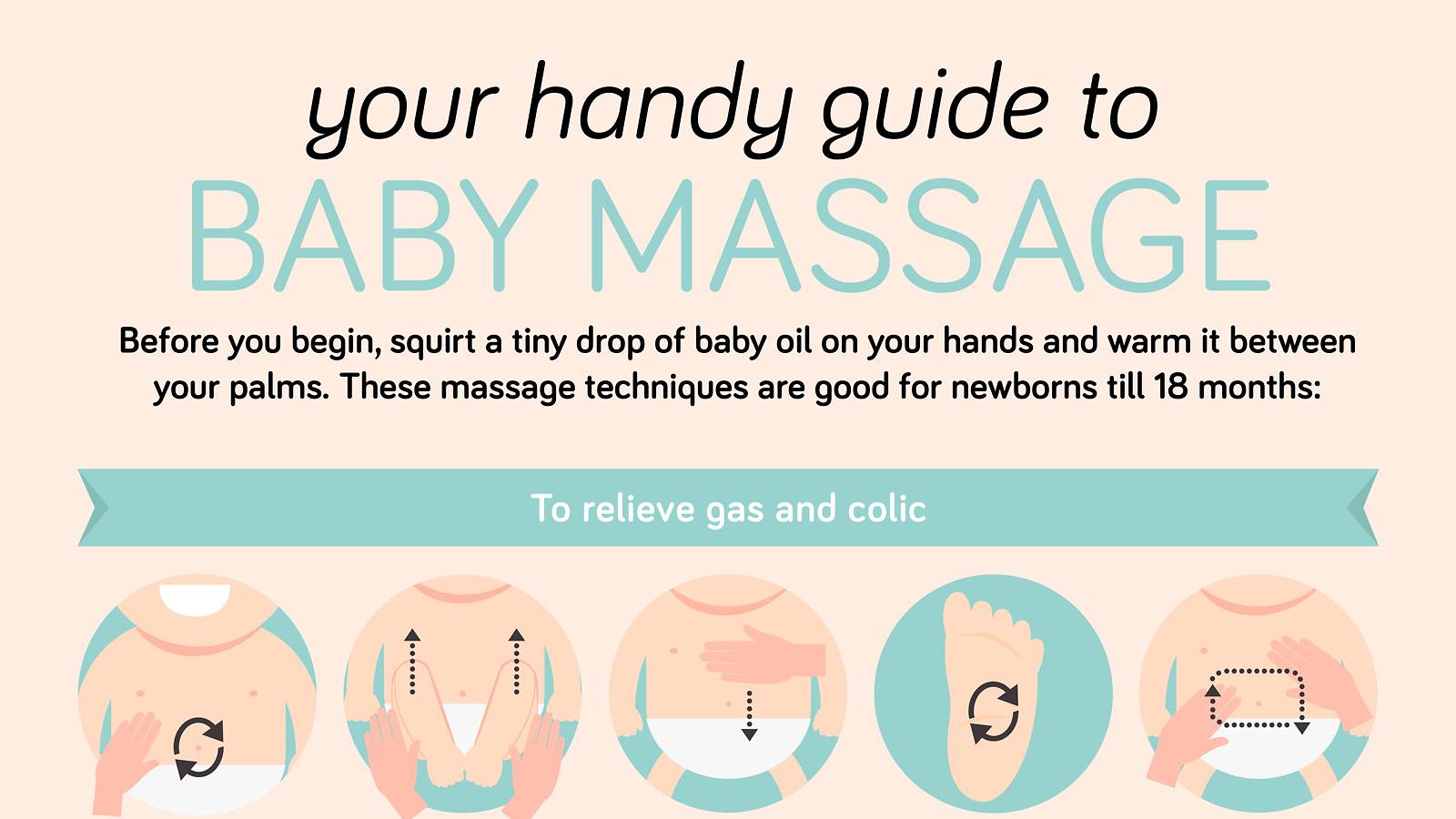
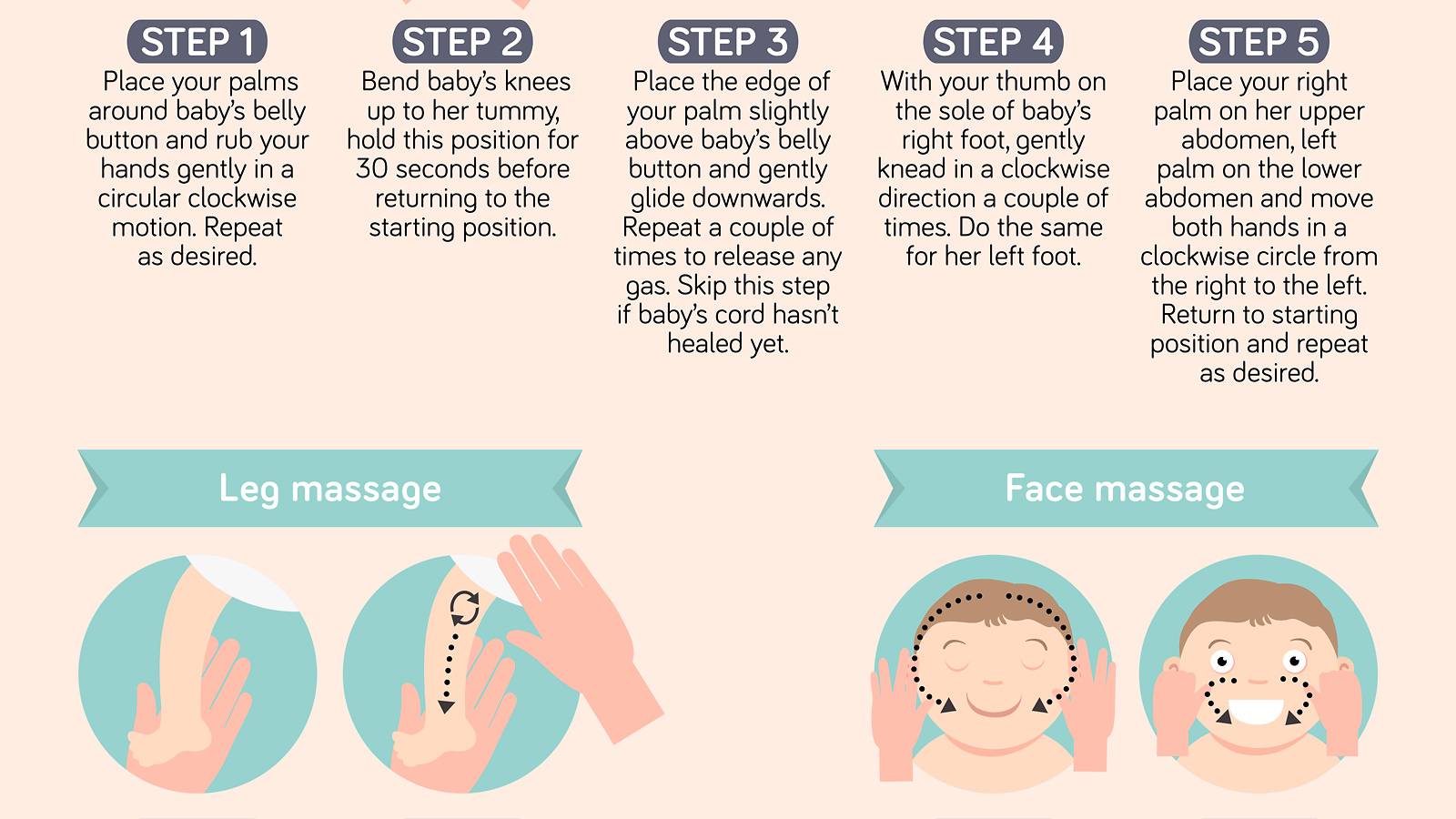
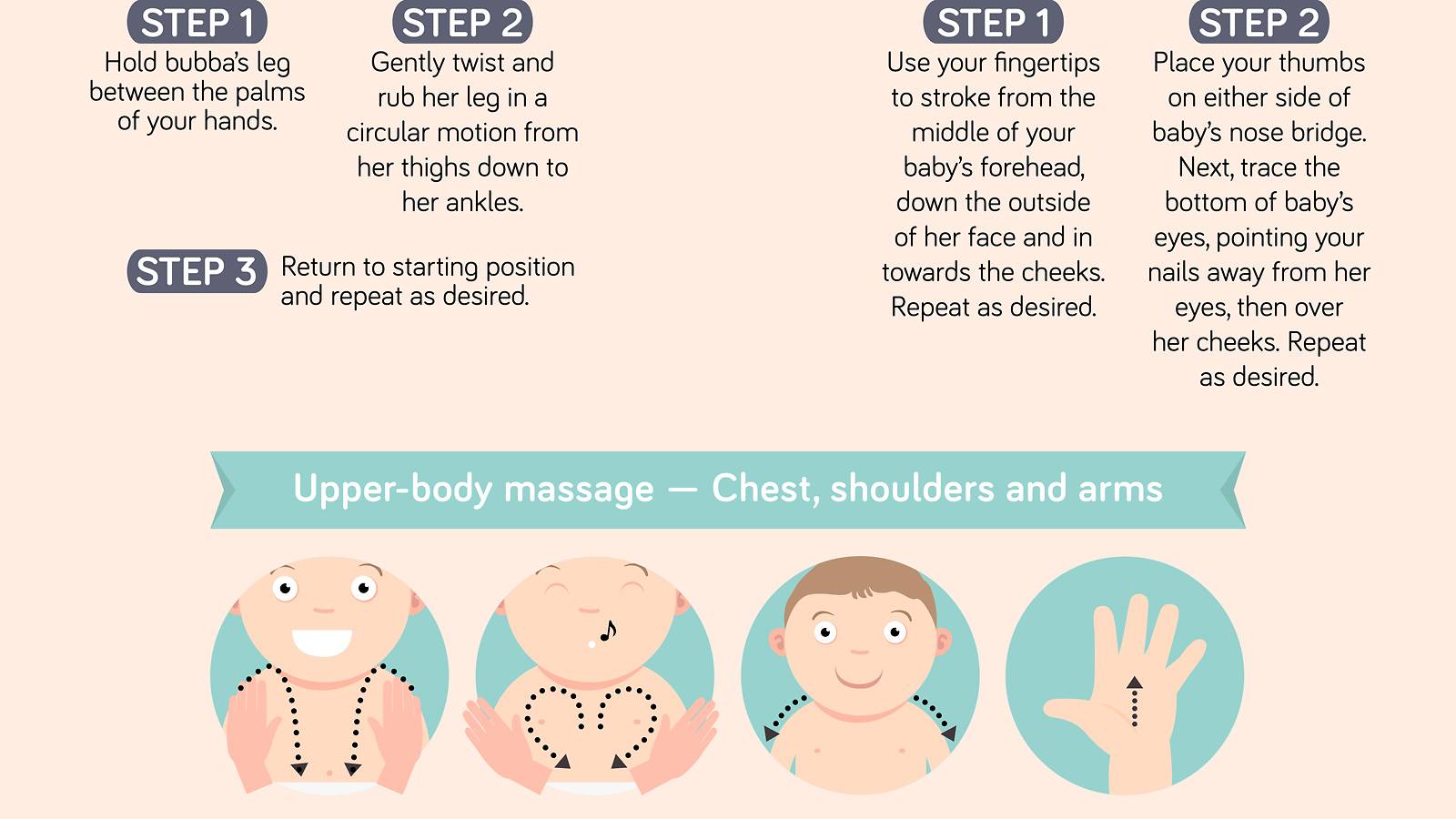

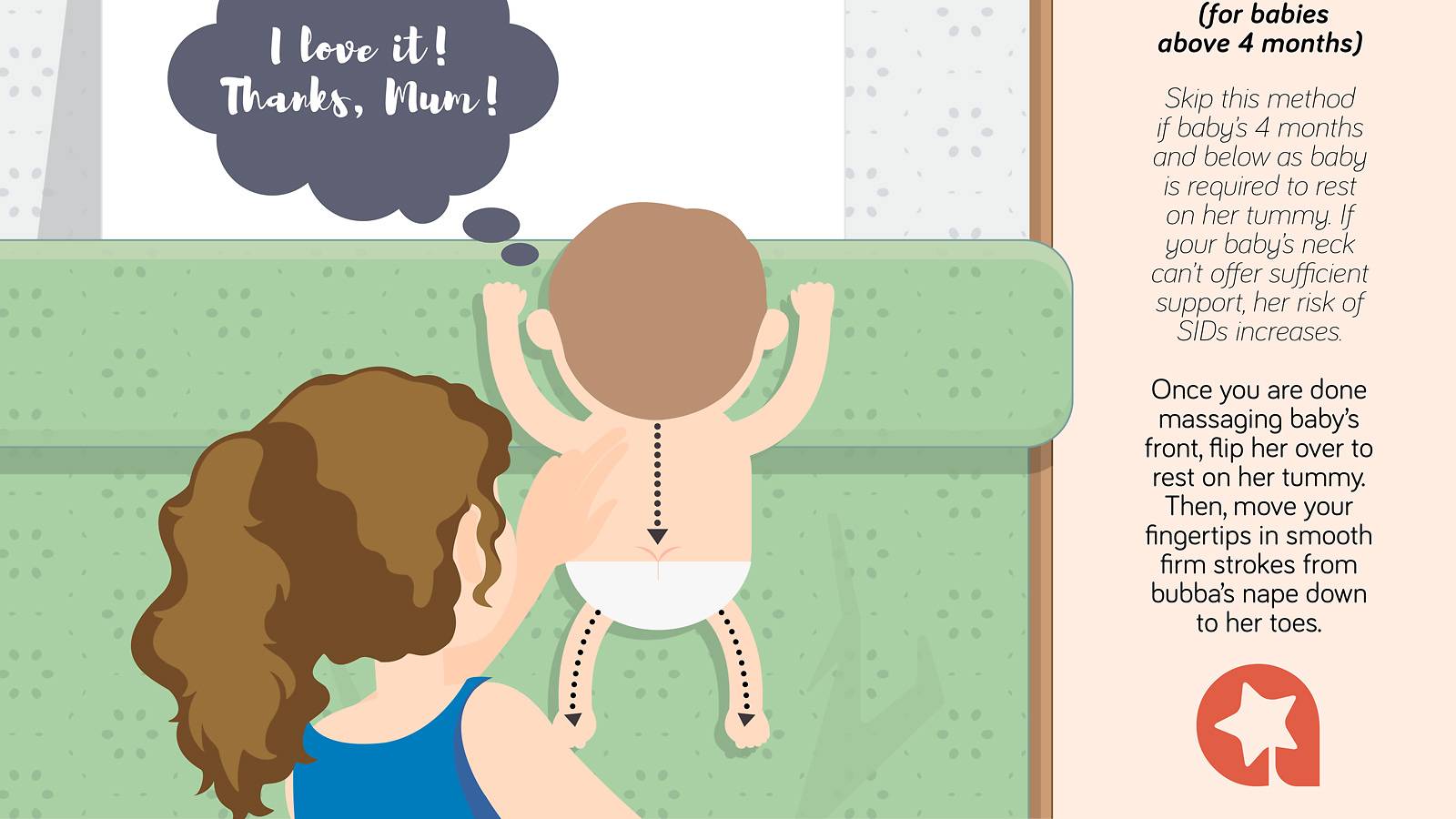
Infographic: Paulyn Ng
Main photo and illustrations: iStock
Like us on Facebook and check SmartParents regularly for the latest reads!
In case you missed these articles…
11 weird things nobody tells you about newborns
